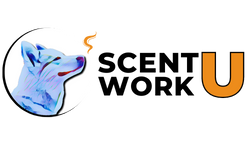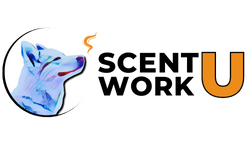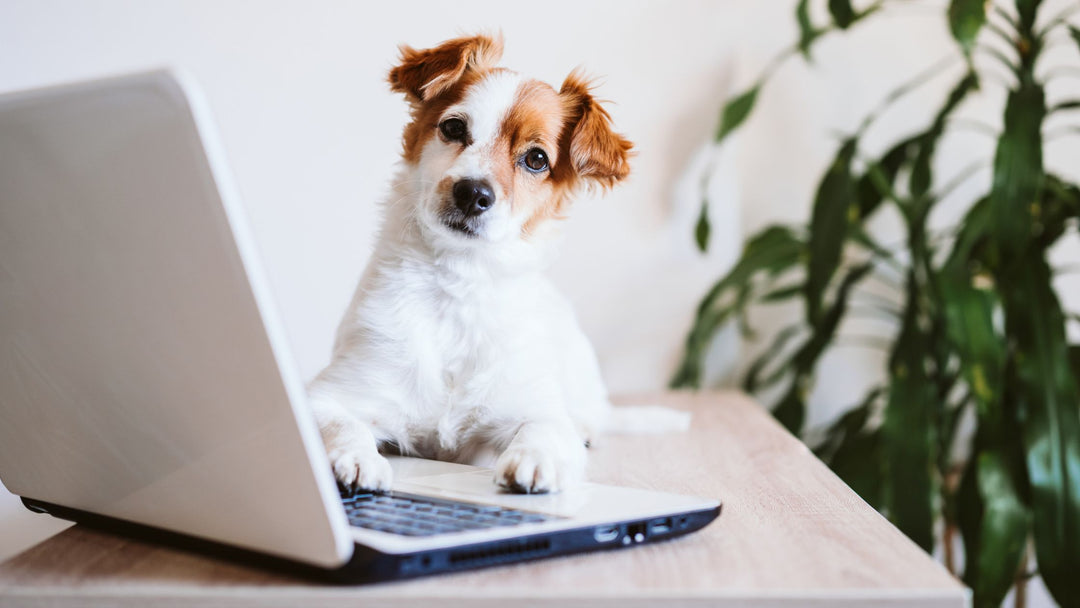Knowing The “Why” Matters

As I embarked on my dog training career, there was one thing that stood out to me above all else: people will use excessive mimicry throughout the training process.
They will stare unblinkingly at their instructor, trying to take in every minute movement and detail, and then replicate it to the letter.
“What is wrong with that!? The instructor knows what they are doing!”
In truth, instructors will oftentimes invite their students to do mimicry. For instance, luring a dog into a sit. The instructor will mime the motion, have their clients repeat the motion on their own and then practice with their dogs.
"SEE!”
Although, there is inevitably one student who struggles to get their dog to sit. They anxiously look around the room, seeing all the other handlers beaming at their promptly sitting dogs, as their pup is doing everything but the requested sit! Their dog is scooting backwards or jumping up, trying to snatch the treat out of the air. Frustrated and embarrassed, the handler feels a knot form in their chest. They desperately try to find the detail they must have missed. They are positive they are doing the exact same thing their instructor did…why isn’t it working?!
If only this poor handler understood WHY the instructor held the treat and moved their hand a certain way. How it was meant to get the dog to slightly lift their head up, gently invoking the dog to push their center of balance backwards, thus urging them to sit on their haunches.
This simple “why” explanation would have prevented the client from slowly circling the drain of despair. Armed with this crucial information, they would have adjusted their hand positioning to ensure their dog successful sat.
“Sigh Santos, what does have to do with Scent Work?!”
The level handlers mimic Scent Work instructors, speakers at workshops and seminars, trial officials or other teams they see at trial, is ten-times worse than what you will see in any basic obedience class.
This mimicry can have problematic results.
“WHY?!”
Ever heard of “It depends” as an answer to a Scent Work training question?
“Yes…”
That's why.
Essentially, mimicry is a single-learning event for the handler and spreads like wildfire throughout the entire community.
"That's sounds like a bit much, Santos..."
I've got the perfect example for you. Perhaps an instructor or speaker, running an experienced dog, moved in an arc after their dog found a hide. This confident and experienced dog did not move, which prompted the instructor or speaker to move in and reward the dog.
What did people see? Dog found hide. Handler moved in an arc around the dog. Dog didn't move to follow the handler. Handler called "Alert", received a "Yes" and rewarded their dog.
Wouldn’t you know, suddenly everyone and anyone in the Scent Work community is doing the “arc move” once their dog finds a hide.
No one asked why. No one wondered what the true purpose of this was and how it fit into the larger picture of training THEIR dog in Scent Work. It was merely, "dog finds hide, I walk in an arc, dog doesn't move, I go in to feed."
No one asked what considerations there may be before implementing this overt handling technique. No one pondered what foundation skills may be required prior to implementing this technique. No one wondered whether this was done for a specific purpose, such PROOFING the dog off the handler.
No.
Instead, people saw, people mimicked and then other people witnessed the "arc move" and mimicked it as well.
Turn around twice and the “arc move” might as well been a viral dance move taking the internet by storm.
There was a total lack of asking the ever-important question of, “Why are we doing this?”.
“Oh…”
Yeah, asking "why" really does matter.
MINDFUL AND THOUGHTFUL TRAINING
Clarity in dog training is exceedingly important. This is especially true in Scent Work. This activity is so different from other dog sports. Scent Work is meant to be a dog-led activity, where the handler is in the passenger seat, being a helpful assistant, providing essential information the dog needs (search area boundaries, reminders of areas the team still needs to cover, applying an expectation of how odor may work in this space, etc.).
However, that means we must ensure the purpose of the game is clear for the dog. Otherwise, they will guess and try to fill in the blanks.
If we are not constantly assessing the “whys” and instead thoughtlessly mimicking what others are doing, we can quickly find ourselves in trouble. Our lack of clarity can create a situation where the dog thinks the game is about something entirely different than merely finding the hide.
As handlers, we must recognize we are trainers, whether we are paid to be or not. We are designing practice searches for our dogs, ideally to expose them to various odor puzzles or situations.
To ensure clarity, a handler MUST understand the “why” behind what they are doing.
In my opinion, these are the types of questions we should have answers to when training our dogs in Scent Work:
- Why did I choose this time of day to practice?
- Why did I choose this search area?
- Why did I choose this type of hide (primary, such as food or toys, or target odors)?
- Why did I choose a certain odor concentration for the target odors?
- Why did I choose this number of hides?
- Why did I choose these hide placements?
- Why did I choose this orientation of containers?
- Why did I place the odor containers in this manner?
- Why did I choose to include, or exclude, distractors?
- Why did I choose to run on- or off-leash, or switch at some point throughout the search?
- Why did I choose to use a leash or long line?
- Why did I choose to use this length for the long line?
- Why did I choose those rewards for this search?
- Why did I choose to reward when I did?
- Why did I choose to reward in the manner I did?
- Why did I choose a certain handling approach, such as:
- Staying at the start line
- Staying at the start line until the dog cast out a certain distance, then following behind
- Directly following behind the dog
- Tucking myself somewhere on the perimeter of the search area
- Staying in the center of the search area
- Moving throughout the entire space
- Stepping in to “help” the dog
- Stepping in to present something to the dog
Believe it or not, this only merely scratches the surface.
Not convinced? Let’s take picking up found hides. Are there sound reasons to do this? Of course! But we had better have a good “why” to do so with our own individual dog in this given training exercise.
If you pick up found hides for a dog who NEEDS those hides to help them triangulate to find any MISSING hides, they are going to be rather upset with you. Rightfully so, you are are making their job needlessly more complicated!
We must know the WHY. It truly does “depend” on the situation and the individual dog.
Simply because you saw someone else did it, and it “worked” for them, is not good enough.
HUMANS PRACTICE LOTS OF SUSPICIOUS BEHAVIORS
Maybe you are attending a seminar, workshop or trial and see someone doing something you have never seen before. It looks interesting and the result seems favorable.
Your brain immediately replays what you saw and tries to dissect it. What can you lift and implement into your own routine?
Don’t allow your lizard brain to take over. I know it is hard but pump the breaks for just a moment.
Ask yourself two simple questions:
- Why are they doing this?
- Why would you do this?
It is very likely whatever this person did works for them and their dog in that specific context. However, another strong possibility is they THINK it helps them when, in truth, it is part of an elaborate suspicious behavior chain that doesn’t add anything of value.
Ever see professional athletes before they get ready to perform? The number of suspicious behaviors these people display is utterly ridiculous and has been parodied for years.
Do you think you, little Scent Work handler, are above such innate tendencies?
Sorry, to bust your bubble, you are not.
Here's yet another example for you: handlers kissing, petting or patting their dogs before they release them to search.
Is their dog deaf or blind? If so, then they may be using tactile touch to indicate to the dog that they may indeed begin to search. Sounds like a great reason to do this!
Is your dog deaf or blind? No? Then what purpose does your kissing, petting or patting serve?
Perhaps your dog is anxious or nervous and you need to settle them before you start. Hey, that can be a wonderful reason!
But what if your dog is confident, not blind or deaf? What purpose does the kissing, petting or patting serve? Why are you doing it?!
Most dogs are trying to get a read on where the odor is within the space at the start line. Kissing, petting and patting them can be incredibly distracting to the dog.
So, is it possible you saw someone else do this, implemented it into your own routine and have now adapted it as your own suspicious behavior chain? If so, is it providing any real value to you or, more importantly, your dog?
Again, asking "why" is critically important.
FINAL THOUGHTS
One of my primary objectives as an instructor is to promote my clients to be more mindful and thoughtful when training. I attempt to explain the “why” in all my exercises or suggestions. This includes modifications or ways an exercise can be customized to meet the needs of a specific team.
Knowing the “why” is key. It ensures you have helpful tools within your training toolbox, as opposed to a mishmash of things you do "simply 'cause".
Assess your own training. Do you have a suitable “why” for everything you do from designing a search to running your individual dog in a search?
Getting a fresh set of eyes can sometimes help. We offer video review services through Scent Work University, where you may submit a training or trialing video for our instructors to review and provide feedback on. They can let you know what is working, what is not and provide you ideas of what to do going forward (and why you would do those things).
Sound interesting? Learn more about our video review services here.

Dianna has been training dogs professionally since 2011. She has done everything from teaching group training classes and private lessons, to specializing in working with fearful, reactive and aggressive dogs, to being a trial official and competition organization staff member.
Following a serious neck and back injury, Dianna was forced to retire from in-person dog training. But she was not ready to give up her passion! So, she created Pet Dog U and Scent Work University to provide outstanding online dog training to as many dog handlers, owners and trainers possible…regardless of where they live! Dianna is incredibly grateful to the amazingly talented group of instructors who have joined PDU and SWU and she looks forward to the continued growth of PDU and SWU and increased learning opportunities all of these online dog training platforms can provide.
In June 2021, Dianna and her business partner, Sean McMurray launched Cyber Scent Work, Inc., an organization that operates in the gray space between training and trialing in Scent Work. With Cyber Scent Work, Inc., handlers have the opportunity to earn Qs, titles and ribbons while also receiving helpful training advice regardless of whether they qualify or not! Be sure to check out Cyber Scent Work, Inc., you will be happy you did!
Join Our Newsletter
Stay up to date with all the happenings at Scent Work University, including the release of new online courses, seminars, webinars, eBooks and receive exclusive promotions and discounts!


